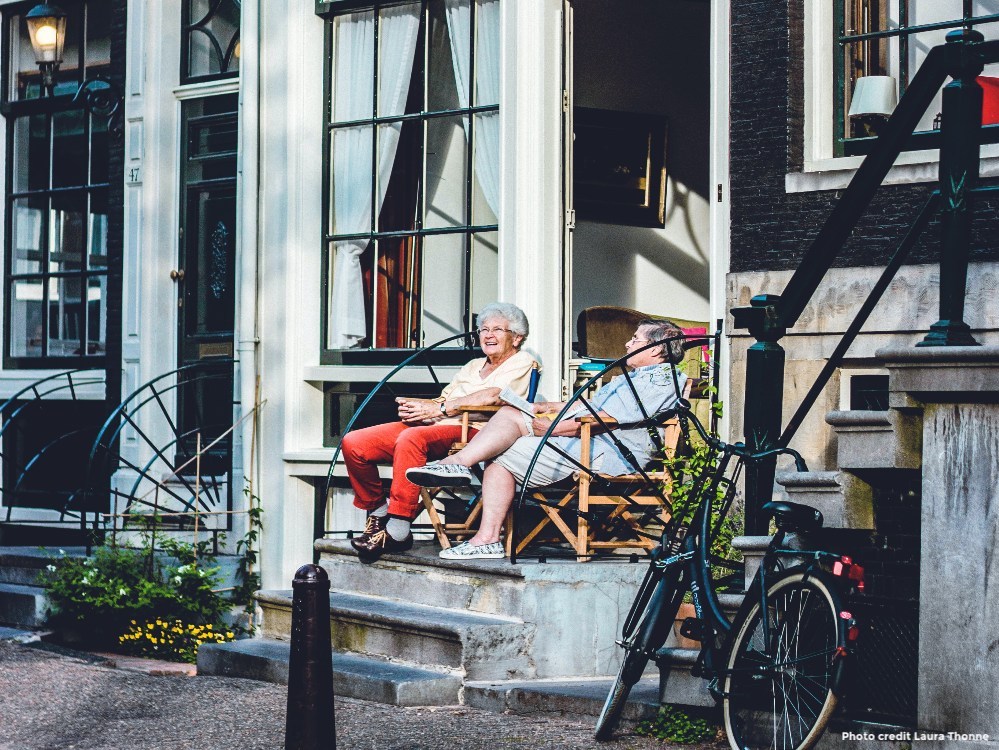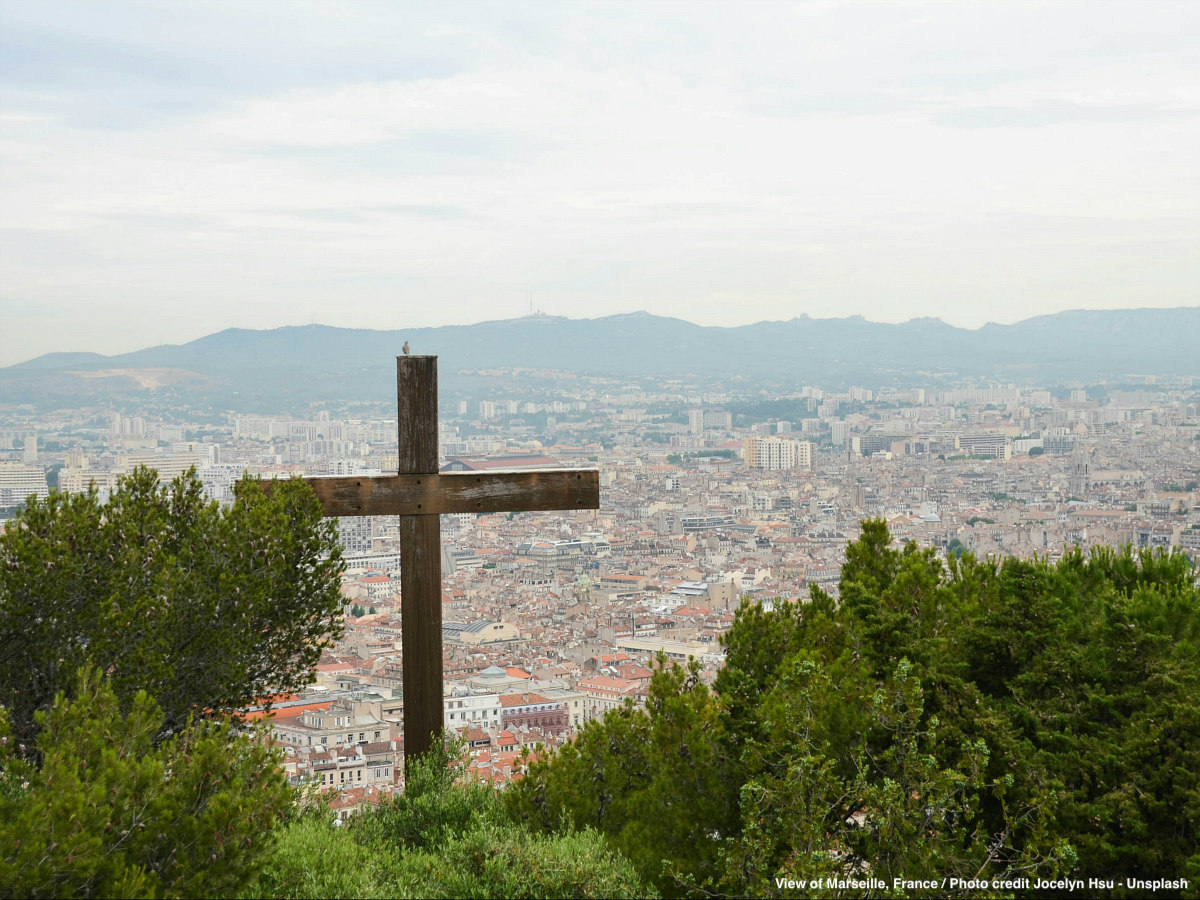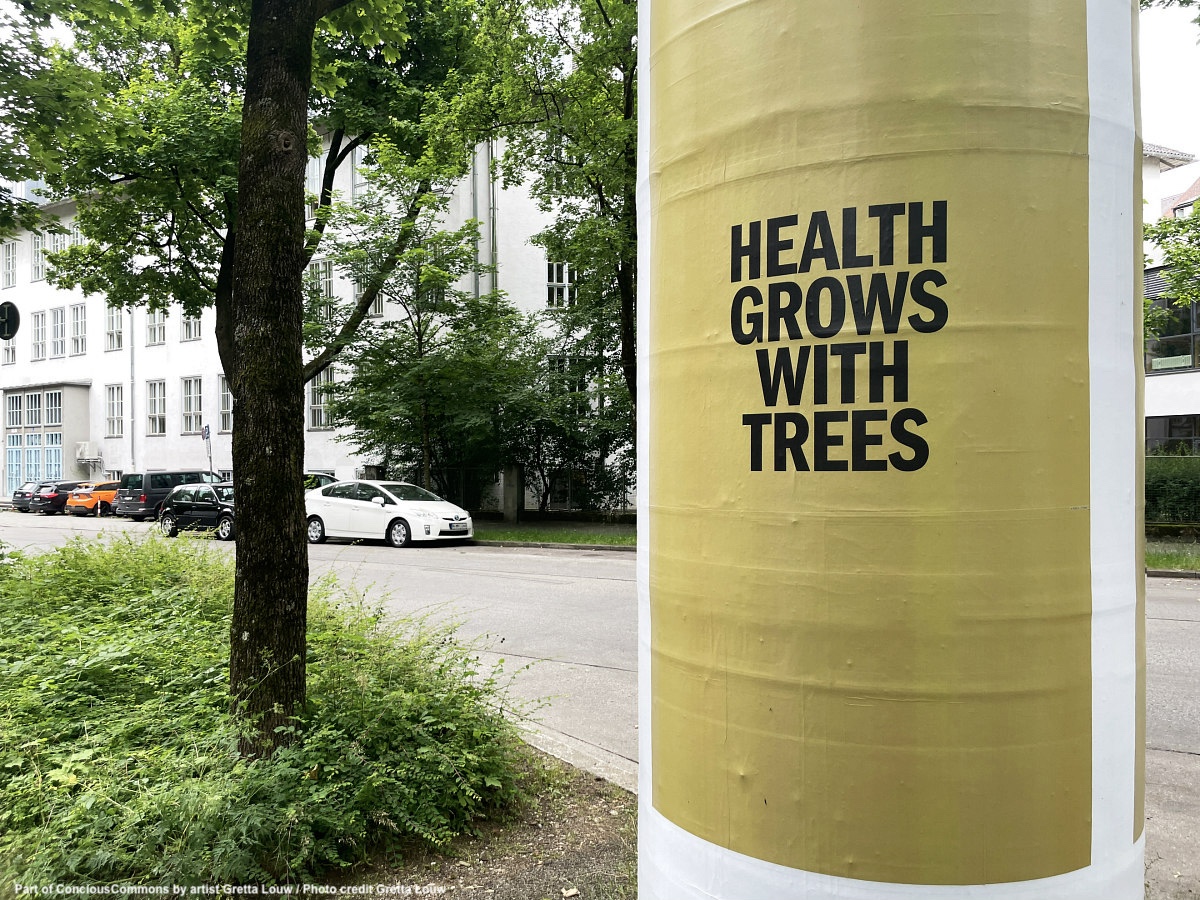Sidewalks are those public places where you can coincidentally bump into somebody that, in a big city, turns out to be a remarkable and unusual experience. Why not have more of that? Shaping the sidewalk and public space experience is having a moment among urban designers, urbanists and placemakers. There has been a steady slew of projects trying to maximize encounters among people at public spaces. Surprisingly simple but an effective way to activate sidewalks in cities, the initiative De BuurtBankjes (in English, neighbourhood benches) encourages residents to place a bench outside their homes turning the sidewalk into a living room for the neighbourhood.
Yes, that’s correct. Last Sunday couches, sofas, chairs and tables persuaded neighbours in Amsterdam, and in other cities around the Netherlands, for a cup of coffee, fresh apple pie or a shuffleboard competition on the street with strangers. This is De Grote Buurt Bankjes Dag, a celebration day twice a year of the initiative De BuurtBankjes which has been running since 2014, the benches remain on the sidewalk and become permanent places to meet with neighbours.
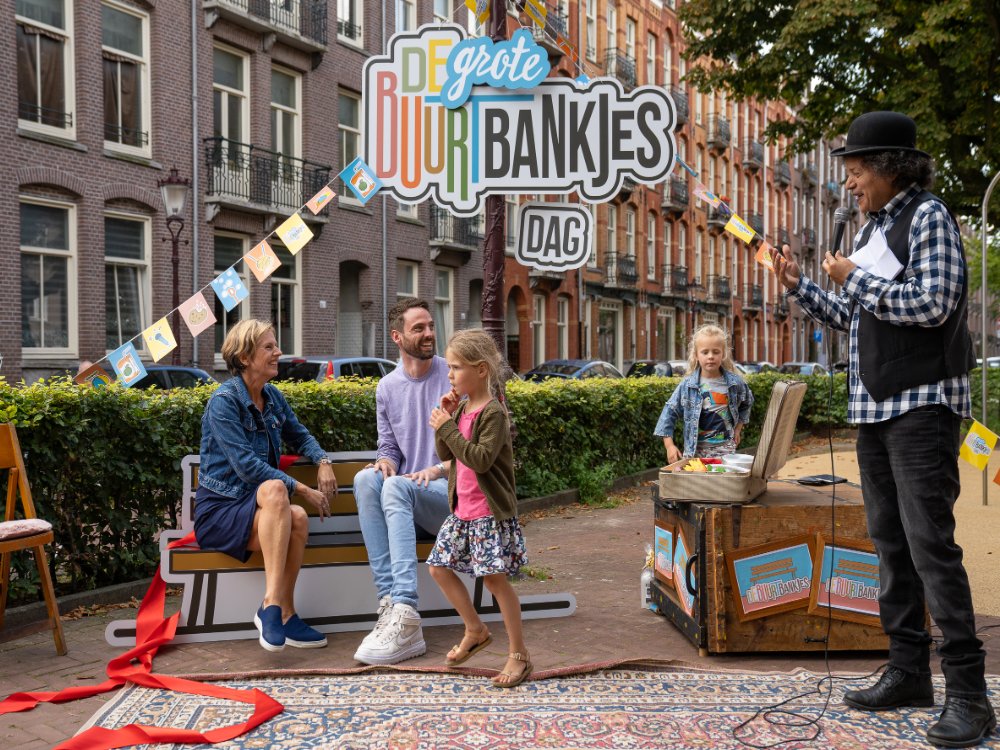
No permit is needed to place a bench on the street as long as 30 centimeters are left on the sidewalk for people to walk. Dutch are well-known for their open mindedness and for never putting curtains over their windows giving bypassers the chance to look inside. That particular interaction between the inside and the outside offers an opportunity to activate sidewalks in cities. By placing a bench on the sidewalk it becomes a better intermediate space for more frequent and better contact with neighbours who would not easily run into each other in their day-to-day lives.
Our biggest living room, the public space
According to De BuurtBankjes, 80% of any informal contact among neighbours takes place in the space between the house and the street. Research shows that people who use the sidewalk as an extension of their home, have a stronger bond with their neighbours and benches in front of houses can add a lot of value to the neighbourhood. The bench is a true conversation starter and radiates trust – there is nothing more intimate than your sofa.
The neighbourhood bench in front of my house is used by my neighbours to drink coffee, rest and by students to eat their sandwiches in the lunch break, describes Maarten Hupkes, director of De BuurtBankjes. Every time I walk by, I chat with my bench guests. It can be so easy!
Last Sunday his bench seduced many more neighbours to stop and say hi, and that until late at night. Also an eleven-years old boy invited neighbours to his couch with cake in exchange for writing on a whiteboard ideas to make their street cleaner. And Roderik Schaepman, the person who took over the concept of De BuurtBankjes this year from its founders Cathelijn de Reede and Jesse Jorg, had to expand his living room on the sidewalk to host an increasing flow of visitors.
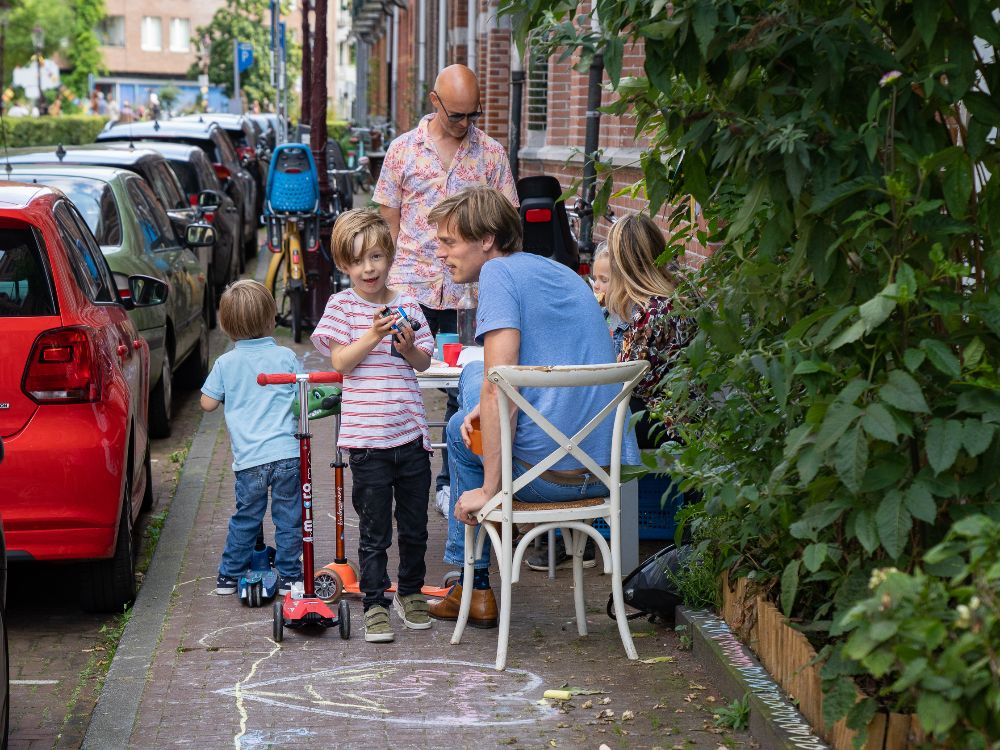
Before running De BuurtBankjes, Schaepman had already founded De Buurtcamping in 2013, an organization which has been promoting camping holidays in city parks, guiding and facilitating local residents to organize a campsite in their nearest public park. Growing up in a small village in the Netherlands, he remembers how hard he found coping with a more individualistic lifestyle in Amsterdam. He and a friend came up with the idea to use the national quirk of camping love to connect people in an urban setting. A public park will do.
Local residents go on holiday in their own park
For three days, the park is a cozy campsite, where the non-written rules of camping camaraderie break down the obstacles of interaction and mingling. They have already organized over 106 neighbourhood campsites around Dutch cities since 2013 thanks to city permits.
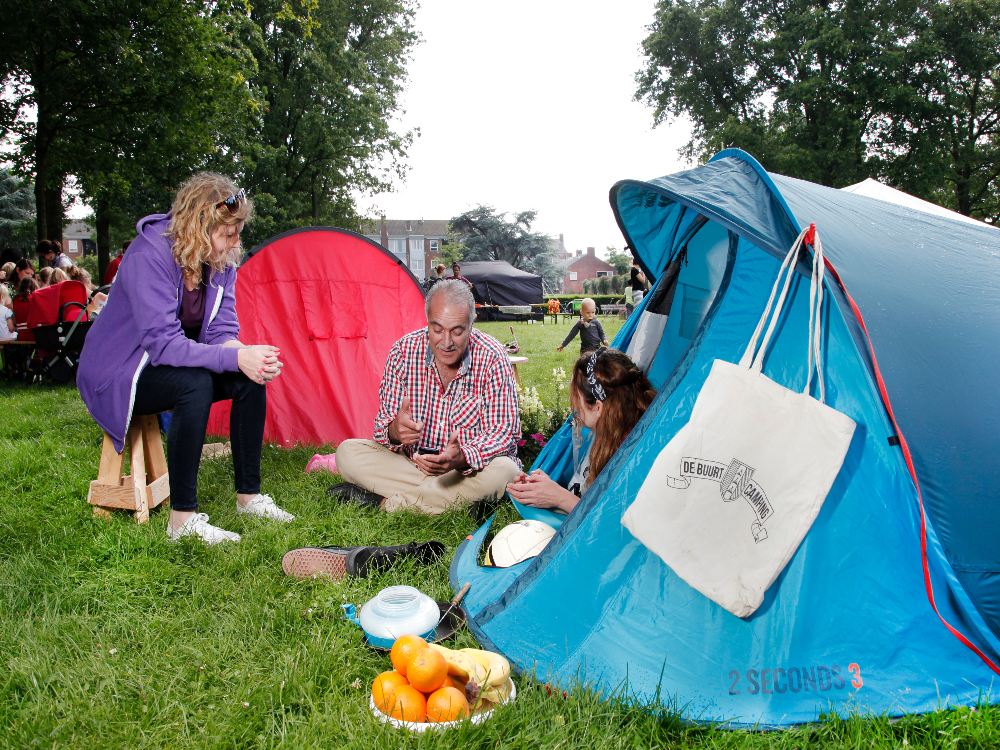
Both initiatives – De BuurtBankjes and De Buurtcamping – aim at reaching out to people of all walks of life and guarantee diverse encounters and connections that strengthen the social value of the neighbourhood: from yuppies to the homeless, from wallflowers to hustlers and from infants to seniors. At De Buurtcamping, one third of the places are reserved for volunteers, one third for paying campers and one third for people who otherwise couldn’t afford a holiday.
After all, when camping, we all look equally clumsy with that roll of toilet paper under our arm. Somebody once said that our campsites at the park look like the ideal society in miniature, explains Schaepman.
De BuurtBankjes and De Buurtcamping have seen an evident increase in registrations to participate this year. At a time when coronavirus restrictions may provoke a record number of neighbour disputes and more loneliness, the need for more mutual contact seems urgent. I wonder if these initiatives could work in other cities where people are more careful about their privacy than the Dutch.
Couches outside homes are in Amsterdam what stoops seem to be in New York. During the lockdown New Yorkers step outside their doors to socialize from a safe distance, to dine al fresco, and to work and learn remotely, and to get to know their neighbours better. The New York Times reported How the Stoop and the Sidewalk Helped New Yorkers Stay Sane.
Sidewalks and stoops, the ideal society in miniature
Marj Kleinman, a photographer and a lifelong Brooklynite resided in her childhood in a Brownstone house, she spent countless hours stoop-sitting with friends and family. At the height of COVID-19 she created Stoop Stories, talking to families, essential workers, small business owners, and activists on their stoops and elevating their stories.
‘The stoops of New York City have always been the place to meet up, catch up, and build community. By telling those stories we see connection and collaboration as an antidote to isolation and a catalyst for change’, explains Kleinman, who also holds an M.A. in Educational Psychology from New York University.
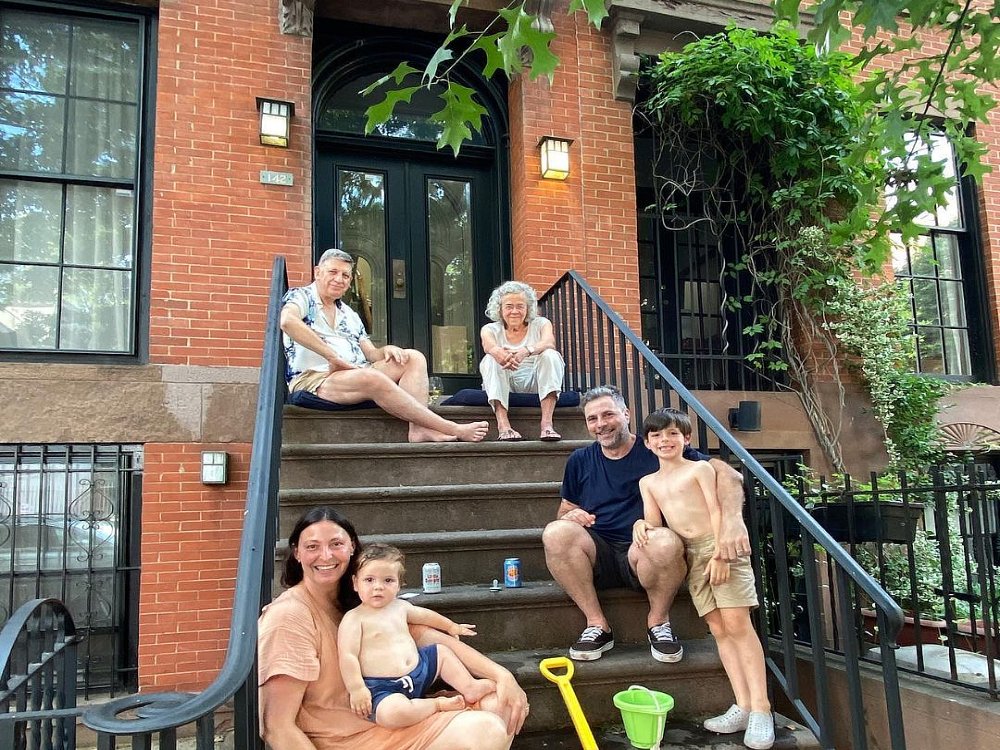
Meanwhile the non-profit organization STooPS connects the neighbourhood of Bedford–Stuyvesant in Brooklyn with a big block party, classes and opportunities for artistic expression in unconventional spaces like the stoops. Its founder, Kendra J. Ross wants people to build partnerships and support each other, thereby fortifying the entire community.
‘Encounters among strangers provide inspiration, self-confidence, collaborations, friendships and a feeling of home and belonging in the neighbourhood,’ affirms Schaepman about De BuurtBankjes.
He rightly pointed out that people taking part in De BuurtBankjes are all urban activists the moment they take the step of putting a couch in front of their doors. While, Kleinman in New York, reminded that many activists for social and equity rights actually protest from the stoops of New York City hence their importance. Like it or not, it is a matter of time that we will all walk down the sidewalk together.
